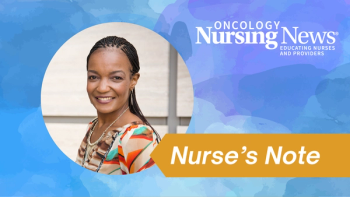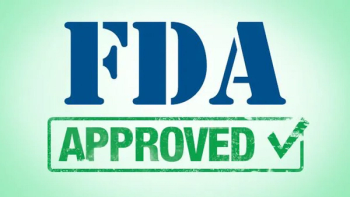
- June 2017
- Volume 12
- Issue 5
Forging an Emotional Connection With Our Patients
Metrics and benchmarks are a vital part of the value proposition behind navigation, but these vignettes illustrate how even the smallest gesture can make a big difference for our patients.
Penny Daugherty, RN, MS, OCN, ONN-CG
We in the subspecialty of oncology nurse navigation assiduously work to authenticate and substantiate our role. We use many metrics, competencies, and benchmarks that validate what we do for our patients, but let us never forget the inestimable emotional significance we can bring to our patients as we guide them through the grueling journey of their cancer experience and treatment.
One of my patients with ovarian cancer was a professor of English literature. We will call her “Elsa.” If this conjures up the title character in the animated film, Frozen, it would crystallize her persona quite accurately. During one of her increasingly frequent admissions, she laughingly characterized her possibility of a cure by saying it was as likely as seeing flying pigs.
That day I went to our hospital gift shop and, lo and behold, found a beautiful, soft, and cuddly flying pig. The woman at the shop is well aware of my eccentricities, so she and I both laughed at my delight in finding a stuffed flying pig as we wrapped it to give to Elsa— who laughed so hard that tears came to her eyes. The next day Elsa went to the GI lab for a procedure, and when she came back to her room, her flying pig was gone. Needless to say, she was very disappointed. But being the kind soul she was, she said that maybe someone took it to give to their child. As always, I was astounded at Elsa’s lemons-to-lemonade thought processes.
Sadly, not too many months later, Elsa was readmitted with anasarca and nausea; in ovarian cancer, this is a profound and moribund development. Having known this beautiful woman since her diagnosis, I went home that day in tears. My husband (another lemons-to-lemonade personality) sat down at the computer and ordered 2 beautiful Webkinz flying pigs from Amazon and had them to us the next day. I brought them to Elsa—who had toddler-aged twins—and she laughingly shared her plans for the stories and wonderful scenarios to be experienced with the twins and their new flying pigs.
Elsa died 2 weeks later, but her husband told me how much fun she had with the twins as she shared not only flying pig stories, but essential cuddling time with her children. Me, I have a crystallized and beautiful memory of Elsa, intermingled with the quantifiable medical aspects of her care.
Another story involves a very genteel man, “Lance” (quite the naturally aristocratic and elegant individual). A nurse colleague and friend asked me to see him as he was her neighbor. Lance had pancreatic and lung cancer and was not doing well at all. I went to his room and spoke with him, which was quite difficult as he had a nasogastric tube in place, oxygen via a rebreather device, and a massive amount of ascites, making it difficult for him to breathe and speak clearly. Nevertheless, he managed to have a short conversation with me.
Profoundly saddened by Lance’s obvious struggle, I came away from his room and pondered how to approach a second visit. Once again, I went to the hospital gift shop—more to compose myself than any other reason—and there was a large, cuddly, funny-looking, stuffed beaver, complete with a big, flat beaver tail. When I got home, my husband asked me what I’d bought at the gift shop (he knows those blue bags well) and my reply was, “Do you want to see my stuffed beaver? His reaction to me—(use your imagination) gave me the perfect idea.
The next morning I went to Lance’s room where this time his wife was with him. We chatted as I held the stuffed beaver behind my back, and it seemed that discharge planning was in progress for Lance to go to a rehab facility (somewhat of a misnomer for his condition). Understandably, neither Lance nor his wife was very cheerful.
I finally said that from our visit the day before, he seemed to me to have a quirky sense of humor and I thought he would appreciate a stuffed beaver. He and his wife both grinned as I went on to say that I’d shown it to my husband the previous evening, but I could not repeat what my husband said when I asked if he wanted to see my stuffed beaver. Lance and his wife both laughed for quite some time. I left, feeling like I’d at least created a happy moment for this couple. Lance’s wife called me to thank me for that moment, saying it had been many months since they had shared a laugh such as they did, because of that stuffed beaver from the hospital’s gift shop.
Although through quality indices and metrics, we can validate the return on investment we can effect as navigators, imperative to the ever dynamic development and evolution of our role is the ability to connect the dots of shared love, laughter, and tenderness, as we support and assist our patients and their caregivers, enabling them to create memories of joy (however fleeting) to take forward into their future, whatever that might hold for them.
Penny Daugherty is an oncology nurse navigator specializing in gynecologic oncology and multiple myeloma at the Northside Hospital Cancer Institute in Atlanta.
Articles in this issue
over 8 years ago
Emerging BTK Inhibitor Tested in B-Cell Malignanciesover 8 years ago
June Adverse Events Report: FDA Labeling Changesover 8 years ago
Fast Facts for the Front Line: Skin Cancer and Sun Protectionover 8 years ago
Educating Patients About Oral Oncolytic Agentsover 8 years ago
Clamping Down on Unproven Cancer Treatment ProductsNewsletter
Knowledge is power. Don’t miss the most recent breakthroughs in cancer care.
















































































